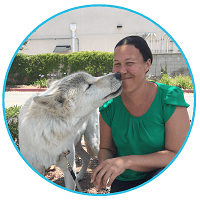Pet Wellness. As good pet parents, we continually do everything we can to make sure our beloved pets are happy and thriving. However, how do we really know whether our animals are healthy? Sadly, it’s become true that people often think their dogs and cats are in a state of health when really they aren’t.
However, because the signs that their bodies are not operating at an optimal level, indicators like skin allergies; a dry or dull coat; bad breath; tooth decay; smelly, soft, and excessive poop; and obesity; to name just a few, are so common, we don’t even blink anymore when our pets experience them. Further, when our pets are young, they may seem to be healthy, but there is a breaking point (which is different for each animal) that they experience where their bodies can no longer handle the toxins that are being flooded into their systems, and they present with disease, illness, and/or chronic pain. In this post, we explore this topic by going over some of the ways you can do a wellness assessment on your dog or cat, to ensure that they are in optimal health. This is a helpful exercise to get in the habit of doing on a regular basis, and to do no matter how you feed your pets or whether you choose to apply traditional preventives (such as flea and tick treatments or heartworm medication) or not. My point is that every single animal should exhibit wellness in all of the following areas, and if they don’t, you need to adjust something to help them rebalance and come back to a state where they can thrive.
Animal Homeostasis
Remember, our animals are not machines. Their bodies are continually working to maintain homeostasis, or balance. That balance is affected by every single thing that goes into their bodies, the food they eat, the pesticides on the grass they run through, the preventives that they receive. As well as things like their quality of sleep, the amount of exercise they get, their owner’s mood, and so on. What this means is that you must continually attend to the clues your dog or cat is giving you to determine whether they are thriving or if something needs to be tweaked. It doesn’t have to be a daunting task, either. Once you are in the habit of regularly looking at them, noticing their energy level, and paying attention to what they feel like when you pet them, you will find that you are doing these mini “Wellness assessments” every day. In fact, it will become so second nature that you won’t even notice you’re doing it, but you will notice if something is a bit “off” and you need to help your dog or cat rebalance.
 So, what should you start training yourself to look for and notice? Remember that you know your pet better than anyone else, and pay attention to your intuition if something just doesn’t seem right. Beyond that, though, there are some good indicators to be able to tell if your pet is thriving. These are especially useful if you are new to thinking this way, and maybe have a pet that has some of the common issues we frequently see crop up in our companion animals. If that’s the case, you may be so used to these issues that your brain doesn’t notice them anymore, so when you start looking at your pet to really assess their wellness, step back a bit and practice looking at them objectively.
So, what should you start training yourself to look for and notice? Remember that you know your pet better than anyone else, and pay attention to your intuition if something just doesn’t seem right. Beyond that, though, there are some good indicators to be able to tell if your pet is thriving. These are especially useful if you are new to thinking this way, and maybe have a pet that has some of the common issues we frequently see crop up in our companion animals. If that’s the case, you may be so used to these issues that your brain doesn’t notice them anymore, so when you start looking at your pet to really assess their wellness, step back a bit and practice looking at them objectively.
Coat
A dog or cat that is thriving should have a shiny, soft coat. When you pet them, you shouldn’t come away with an excess of oily residue on your hands.

While they will still shed according to the dictates of their species and breed, the shedding is usually reduced. The skin will be supple and in good condition, and it will be free from hot spots, allergies, and excessive itchiness.
Eyes
When a dog or cat is in optimal health, its eyes are clear and bright. No matter what breed your dog or cat is, and whether they are a purebred or a mix of many breeds, their eyes should not be weepy or runny.
Parasites
A dog or cat with a strong, balanced immune system doesn’t suffer from flea and tick infestations, even when you don’t use conventional flea and tick preventives (such as Frontline). While they may pick up a flea or tick every once in a while, particularly in areas where those insects abound, it never gets out of balance.

Did you find this article useful? Would you like 100% free access to more articles like these, and free access to over 5,000 vetted pet care service professionals throughout the United States? Sign up here for a free Petworks account, and take 10% off your first booking, on us!
Body Condition/Weight
A dog or cat that is at the peak of health is lean and muscular. When you look down at them from above, you should be able to see a narrowing in their waist. When you touch them, you should be able to easily feel their ribs. Additionally, they don’t have excess fat on their chest or back.
Oral Health
A healthy, vital dog or cat’s teeth are sparkling white and clean, and they don’t have bad breath. The gums are not excessively red or inflamed, and there isn’t a buildup of plaque or tartar.
Odor
A dog or cat that is balanced and thriving doesn’t have a strong odor—in fact, they don’t have much, if any, smell at all!
Stool and Anal Glands
A thriving dog or cat has small, dense, compact stools, and they move their bowels less frequently than an animal that isn’t thriving. Because they have to strain a bit to defecate, their anal glands are kept clean, clear, and in good working order, without frequent trips to the vet or groomer to have their anal glands cleared.
Behavior
Dogs and cats that are truly healthy are neither lethargic nor hyperactive, but instead have an appropriate amount of energy for their species, breed, age, and individual character.
Mental Ability
Healthy, thriving dogs and cats have incredible mental capabilities. Their brains can function at their optimal level, right along with their bodies and their spirits, which means they are extraordinarily perceptive and able to focus.
Endurance
 When dogs and cats are properly supported, they have lots of endurance within the parameters of their individual and breed characteristics. This is especially nice for performance animals, such as dogs that are used for agility, showing, and hunting.
When dogs and cats are properly supported, they have lots of endurance within the parameters of their individual and breed characteristics. This is especially nice for performance animals, such as dogs that are used for agility, showing, and hunting.
Aging
Dogs and cats that are flourishing do so even when they’re what society terms “senior”—9, 10, 11, or 12 for dogs (and in fact, well beyond those ages), and 14, 15, or 16 (or more!) for cats! They still have energy, are mentally sharp, and exhibit all the other qualities of a thriving animal.
Assess Pet Wellness
Take some time to really assess your pet each day, until it becomes habit. Remember, you know them best, and there are lots of ways to check to make sure that they are thriving. These are some of the biggest ones, and once your pet is thriving, you will notice big changes in all of these areas, no matter what age, breed, species, or gender they are. And regularly seek visits to your vet, to ensure your pet remains healthy and happy.
***
 Kristin Clark started Canine Health Promotion so she could help dogs thrive. Serving clients whose dogs range from top performance dogs to beloved family pets, Kristin is passionate about helping all dogs live their best lives. She truly understands this journey, because she walks it herself every single day. With four dogs of her own, she knows just how hard it can be to find help for health issues using conventional means. Kristin is board certified by the American Council of Animal Naturopathy as a Carnivore Nutrition Consultant and a Small Animal Naturopath, and devotes a great deal of time to researching how best to help dogs live their optimal lives. Kristin also writes for, edits, and publishes Raw Pet Digest, an international online magazine devoted to helping dogs and cats live and thrive naturally.
Kristin Clark started Canine Health Promotion so she could help dogs thrive. Serving clients whose dogs range from top performance dogs to beloved family pets, Kristin is passionate about helping all dogs live their best lives. She truly understands this journey, because she walks it herself every single day. With four dogs of her own, she knows just how hard it can be to find help for health issues using conventional means. Kristin is board certified by the American Council of Animal Naturopathy as a Carnivore Nutrition Consultant and a Small Animal Naturopath, and devotes a great deal of time to researching how best to help dogs live their optimal lives. Kristin also writes for, edits, and publishes Raw Pet Digest, an international online magazine devoted to helping dogs and cats live and thrive naturally.
 In 2021, Dr. Marty Goldstein DVM joined the pet care platform Petworks as an advisor in its Animal Nutrition care division. Dr Marty Nature’s Blend is on a mission to help your pets live their healthiest lives possible. Dr. Marty’s pet nutrition expertise and guidance has helped Petworks evolve and become the preeminent animal and pet nutrition consultation service for pet parents in North America.
In 2021, Dr. Marty Goldstein DVM joined the pet care platform Petworks as an advisor in its Animal Nutrition care division. Dr Marty Nature’s Blend is on a mission to help your pets live their healthiest lives possible. Dr. Marty’s pet nutrition expertise and guidance has helped Petworks evolve and become the preeminent animal and pet nutrition consultation service for pet parents in North America.
 In 2022, Blue Buffalo Founder Bill Bishop Jr. joined Petworks as Senior Advisor in our Animal Nutrition Care Division. Bill brings his extensive expertise in pet food innovation and business leadership. His guidance helps Petworks enhance our pet nutrition service offerings, helping to ensure that pet parents throughout the world receive trusted, science-backed nutritional support for their dogs, cats, and animals.
In 2022, Blue Buffalo Founder Bill Bishop Jr. joined Petworks as Senior Advisor in our Animal Nutrition Care Division. Bill brings his extensive expertise in pet food innovation and business leadership. His guidance helps Petworks enhance our pet nutrition service offerings, helping to ensure that pet parents throughout the world receive trusted, science-backed nutritional support for their dogs, cats, and animals.
 Petworks Co-Founder Kevin Kinyon is a life-long animal lover who works tirelessly to improve the lives of pets and their parents. Human and animal qualities he values most are integrity, humor, and empathy.
Petworks Co-Founder Kevin Kinyon is a life-long animal lover who works tirelessly to improve the lives of pets and their parents. Human and animal qualities he values most are integrity, humor, and empathy.



Hi, your blog is full of comments and is very helpful with pet care advice.
We love Petworks.com!
Petworks is such a better platform than Rover or Wag!